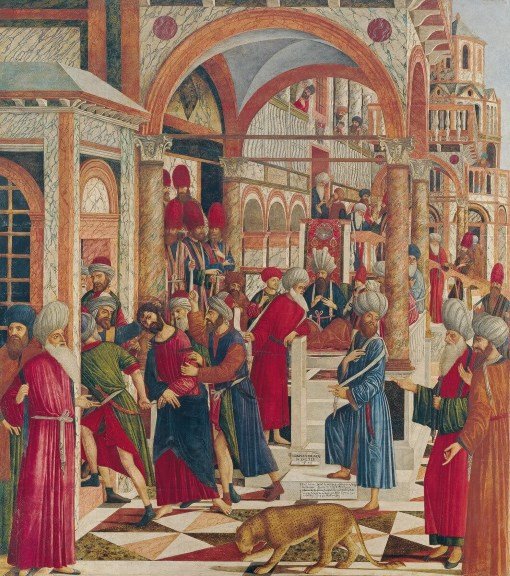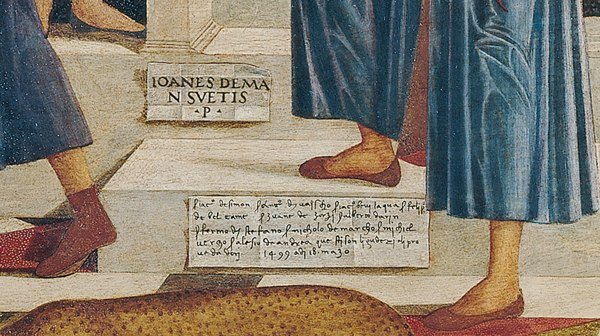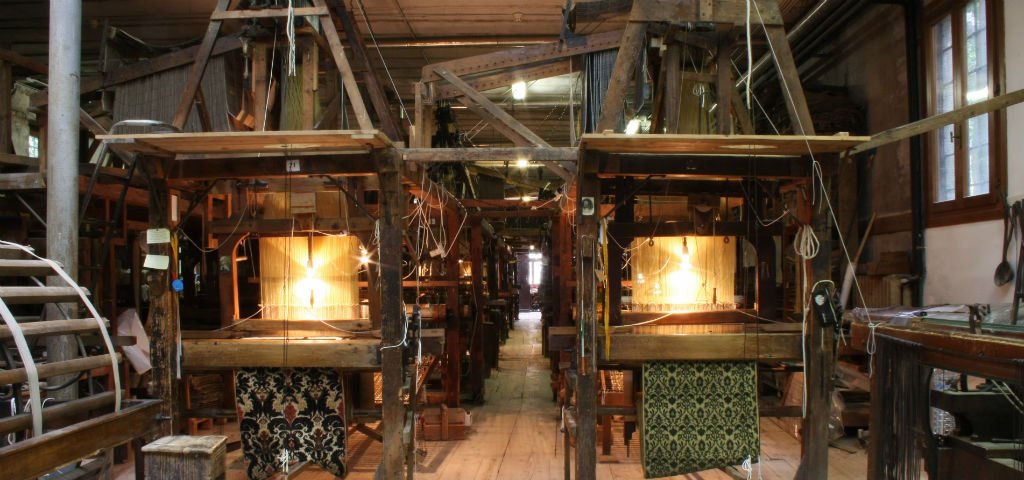Founded officially in 1875, Tessitura Luigi Bevilacqua is one of the most authentic examples of the Venetian textile tradition. However, its roots go back much further to the heart of the Venetian Renaissance when the lagoon city was the center of production for velvet and other luxury fabrics.
Origins: A Family History in the Heart of Venice
The Bevilacqua family’s involvement in the textile industry dates back to the 15th century. Clear evidence of this can be seen in Giovanni Mansueti’s painting St. Mark Dragged to the Synagogue (1499), where a man named “Giacomo Bevilacqua Weaver” appears among the patrons. This is not an isolated incident; archival documents from the Serenissima Republic report that several members of the Bevilacqua family were involved in textile trades over the centuries, including marzer (cloth merchant), drapier, cimador, and dyer. This long tradition of craftsmanship provided the cultural and technical foundation on which Luigi Bevilacqua built his enterprise.
The Crisis of the Art of Silk: A Heritage at Risk
In the mid-16th century, Venice had more than 1,200 weavers, more than double the number from the previous century. However, this flourishing activity began a slow decline with the arrival of Napoleonic reforms. In 1806, an imperial decree suppressed all craft guilds, including the renowned “Art of Silk.” The end of craft schools and the discontinuation of the oral transmission of traditional techniques put Venetian craftsmanship into a serious crisis.
During the same period, French inventor Joseph Marie Jacquard introduced the Jacquard device. Developed between 1804 and 1806, this mechanism made it possible to control the raising of warp threads using perforated cards, enabling the creation of complex textile designs. Initially installed on manual looms, the Jacquard device was later integrated into new mechanical looms powered by steam or electricity.
While this mechanization drastically accelerated production, it also resulted in the loss of many craft skills, particularly in velvet weaving. The decline of craftsmanship was not caused by the device itself, but by its use in industrial processes that prioritized speed over product quality and uniqueness.
Rebirth: Arts and Crafts and the Bevilacqua Manufactory
In the second half of the 19th century, the Arts and Crafts movement was born in England in contrast to rampant industrialization. Based on the principles of reviving craftsmanship, functional beauty, and manual labor, the movement swiftly spread throughout Europe and the United States, rekindling interest in traditional decorative arts techniques, such as weaving.
In this cultural context, Luigi Bevilacqua and his business partner, Giovanni Battista Gianoglio, established a new textile factory in Venice in 1875. They established it in a historic building on Fondamenta San Lorenzo in the sestiere (district) of Castello, which was once the site of a disused School of the Art of Silk. It was an emblematic gesture to pick up exactly where Venetian textile activity had stopped, reviving the 18th-century manual looms and breathing new life into a seemingly lost tradition.
Continuity of Tradition
Today, Tessitura Luigi Bevilacqua is the only company in Venice that produces hand-operated velvets using ancient manual Jacquard looms. This is an activity that requires time, expertise, and absolute dedication. As Alberto Bevilacqua, the current CEO, says, “We are practically alone in Italy, so it is important for us to continue the tradition of our ancestors.”
Our story is told on an international level as well, as seen in the Great Big Story (CNN) video, which highlights the cultural value and rarity of a textile tradition that has remained almost intact over the centuries. It is a testament to the fact that even today, the beauty of handmade products in Italy continues to speak a universal language.
Cover Photo Credit: Katarina Rothfjell





